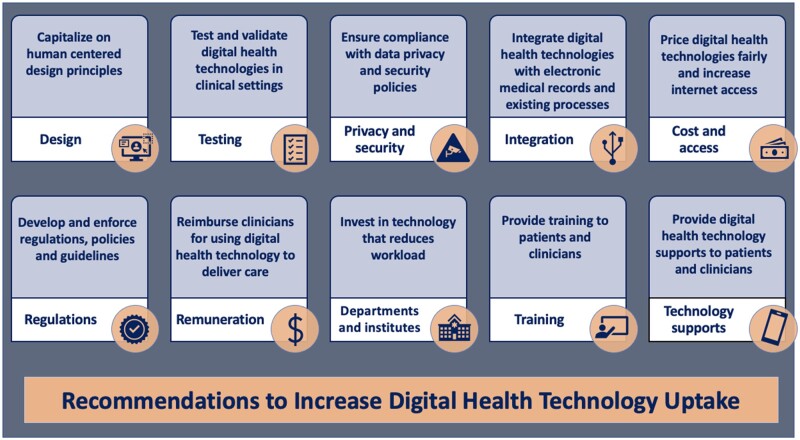- Record: found
- Abstract: found
- Article: found
Barriers and facilitators of the uptake of digital health technology in cardiovascular care: a systematic scoping review

Read this article at
Abstract
Digital health technology (DHT) has the potential to revolutionize healthcare delivery but its uptake has been low in clinical and research settings. The factors that contribute to the limited adoption of DHT, particularly in cardiovascular settings, are unclear. The objective of this review was to determine the barriers and facilitators of DHT uptake from the perspective of patients, clinicians, and researchers. We searched MEDLINE, EMBASE, and CINAHL databases for studies published from inception to May 2020 that reported barriers and/or facilitators of DHT adoption in cardiovascular care. We extracted data on study design, setting, cardiovascular condition, and type of DHT. We conducted a thematic analysis to identify barriers and facilitators of DHT uptake. The search identified 3075 unique studies, of which 29 studies met eligibility criteria. Studies employed: qualitative methods ( n = 13), which included interviews and focus groups; quantitative methods ( n = 5), which included surveys; or a combination of qualitative and quantitative methods ( n = 11). Twenty-five studies reported patient-level barriers, most common of which were difficult-to-use technology ( n=7) and a poor internet connection ( n=7). Six studies reported clinician-level barriers, which included increased workload ( n=4) and a lack of integration with electronic medical records ( n=3).Twenty-four studies reported patient-level facilitators, which included improved communication with clinicians ( n=10) and personalized technology ( n=6). Four studies reported clinician-level facilitators, which included approval and organizational support from cardiology departments and/or hospitals ( n=3) and technologies that improved efficiency ( n=3). No studies reported researcher-level barriers or facilitators. In summary, internet access, user-friendliness, organizational support, workflow efficiency, and data integration were reported as important factors in the uptake of DHT by patients and clinicians. These factors can be considered when selecting and implementing DHTs in cardiovascular clinical settings.
Graphical Abstract
Related collections
Most cited references41
- Record: found
- Abstract: found
- Article: not found
PRISMA Extension for Scoping Reviews (PRISMA-ScR): Checklist and Explanation
- Record: found
- Abstract: not found
- Article: not found
